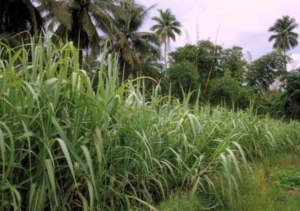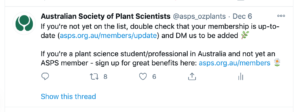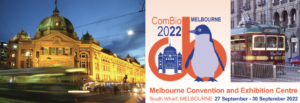- About
- Members
- Join
- Member log in
- Membership Renewal
- Member directory
- Life Members
- ASPS Life Member Professor Graham Farquhar
- ASPS Life Member Associate Professor Hendrik (Hank) Greenway
- ASPS Life Member Dr Marshall (Hal) D Hatch
- ASPS Life Member Dr Paul E Kriedmann
- ASPS Life Member Dr Mervyn Ludlow
- ASPS Life Member Emeritus Professor Rana Munns
- ASPS Life Member Conjoint Professor Christina E Offler
- ASPS Life Member Professor (Charles) Barry Osmond
- ASPS Life Member Emeritus Professor John W Patrick
- ASPS Life Member Dr Joe Wiskich
- Corresponding Members
- Elected Fellows
- Events
- Awards & Funding
- Employment
- Publications
- Research
- Teaching
- Menu
December Phytogen and GPC bulletin
14 December 2020
December 2020 Phytogen
11 December 2020
What to do over the summer holidays……
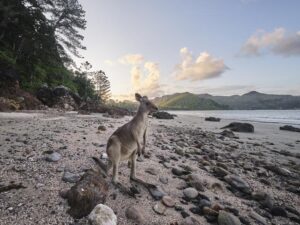
Over the summer holidays we hope you manage to get out into Nature, Rest, Recharge and Rejuvinate like this kangaroo.
Below is a recipe for gingerbread Christmas cookie trees. Look at how the ingredients are mostly plants. You might enjoy the links to read more about each of these amazing ingredients.
Gingerbread Christmas Cookie Trees

recipe from: Food network
Bake Time: 8 to 10 minutes
Total Time: 2 hours
Servings: 2 dozen, 4 to 5 cookies per tree (depending on size)
Ingredients:
Gingerbread Cookies
3 cups all-purpose flour
¼ tsp baking soda
¼ tsp salt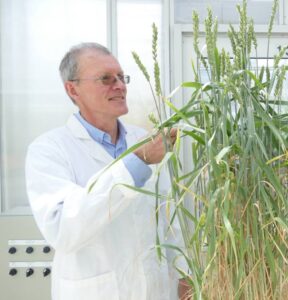
2 tsp cinnamon, 1 tsp ginger
¼ tsp nutmeg
¼ tsp cloves
6 Tbsp unsalted butter, at room temperature
½ cup brown sugar
1/3 cup light corn syrup
1/4 cup molasses 1 to 2 Tbsp water
Prof. John Evans (ANU) with Triticum aestivum (wheat)
Royal Icing
2 cups confectioners’ sugar
1 ½ Tbsp meringue powder, 3 Tbsp water, plus more to thin, 1/2 Tbsp light cornsyrup, ¼ tsp vanilla extract or lemon juice (optional)
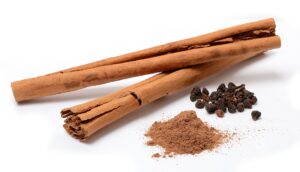
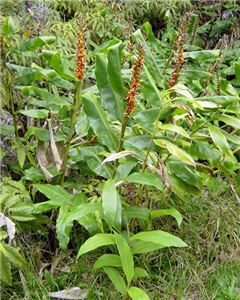
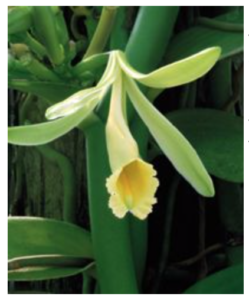
Zingiber officinale (ginger), Cinnamomum verum (cinnamon) and Vanilla planifolia (vanilla)
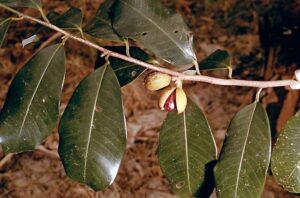
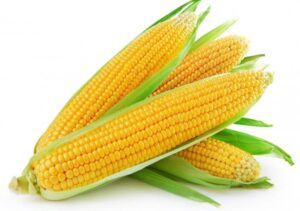
Zea Mays (sweetcorn), Myristica fragrans (nutmeg), Syzygium aromaticum (clove) and Saccharum officinarum (sugarcane).
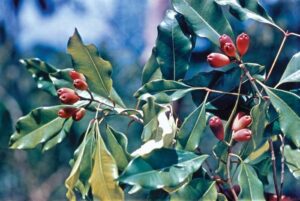
Directions:
Gingerbread Cookies
1. In a large mixing bowl, whisk the flour, baking soda, salt and all of the spices together. Set aside.
2. In the bowl of a stand-mixer fitted with the paddle attachment, mix the butter and brown sugar until smooth, about 2 minutes. Add the corn syrup and molasses and mix until combined.
3. With the mixer on low, add the dry ingredients in two additions. Mix until combined. If the dough seems dry, add in the water and mix until the dough comes together to form a ball.
4. Gather the dough and form into a disk. Wrap the disk in plastic and refrigerate for at least 2 hours or overnight.
5. When ready to bake, preheat the oven to 350°F. Remove the dough from the refrigerator and let sit at room temperature until it is soft enough to roll out (5 to 10 minutes). Line two baking sheets with parchment paper or non-stick baking mats. Set aside.
6. Dust a clean work surface lightly with flour. Roll out the dough until about ¼-inch thick and cut out with various sizes of star cookies cutters.
7. Baked the cookies for 8 to 10 minutes, or until the edges turn slightly golden. Repeat with the remaining dough.
8. Completely cool the cookies on a wire rack before decorating.
Royal Icing
1. Place the confectioners’ sugar and meringue powder in the bowl of an electric mixer fitted with a whisk attachment. Gently stir to combine. Add the water and mix on medium-low until combined. Turn the mixer up to medium-high and continue to mix until stiff peaks form, 5 to 8 minutes.
2. Add the corn syrup and vanilla or lemon (if using) and mix to combine. If the icing is still rather thick and clumps together, add more water (a teaspoon or two at a time), until the icing holds stiff peaks.
Assembly
1. Thin the royal icing with water until the desired consistency is reached (for piping, it should resemble the same consistency as toothpaste). Decorate the tops of the cookies, as desired.
Writing papers, STEM, awards and grant success
Congratulations to all and for those who missed out, please keep trying and reach out to to your colleagues for help with your grant, applications and paper writing.
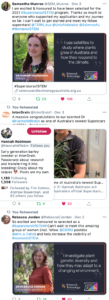
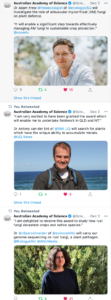
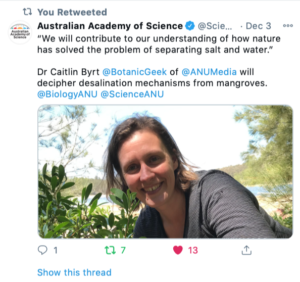 Teaching – From Dr Beth Loveys, Plant Science Education Representative. The University of Adelaide, beth.loveys@adelaide.edu.au
Teaching – From Dr Beth Loveys, Plant Science Education Representative. The University of Adelaide, beth.loveys@adelaide.edu.au
An example of online delivery of practical content in the Faculty of Sciences
Science based courses by their very nature are heavily reliant on giving students practical experiences in the laboratory to facilitate the connection of theory with application and context. Cancellation of all face to face practical classes during the COVID19 pandemic has required creative solutions to be sought to give students some appreciation of the practical components of their courses.
Foundations of Plant Science is a core level II course taught in the School of Agriculture, Food and Wine for Bachelor of Viticulture and Oenology and Bachelor of Agricultural Science students. Combining lecture content with video demonstrations, screen recording and knowledge checking quizzes was used to deliver a virtual practical for students in this course. One of the fundamental concepts taught in the course is that of plant water transport.
During live streamed lectures students were exposed to the relevant theory of plant water transport this was enhanced by demonstrations using the document camera function in the lecture theatre, of the practicalities of measuring plant water status. Formative in-lecture quiz questions were designed to get students thinking about what they had just seen and heard. Students were able to engage synchronously or asynchronously.

Students were then directed to the relevant MyUni pages in the course to undertake their online practical.
Peer mentors (senior students who had completed the practical in 2019) were engaged to film the practical components of the laboratory session that the 2020 cohort of students were missing out on. Audio narration explained the methodology being demonstrated by the peer mentors. It was important that the practical skills were demonstrated by peer mentors rather than academics to create an authentic practical class experience. Senior Peer Mentor Lucas Allen commented: “It was great to know that I was helping the second year students with their prac. It also helped to refresh my own knowledge of how to correctly use the pressure chamber 🙂.”
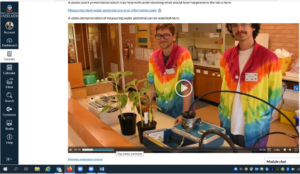
A class data set was provided and screen recording allowed additional explanation of the data and demonstration of required calculations.
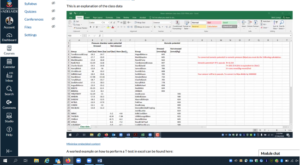
Students were able to check their knowledge with unlimited attempts at a practice quiz before completing the assessment task
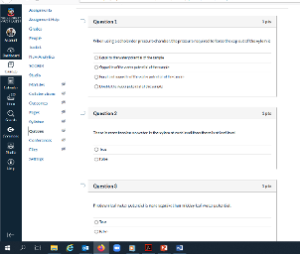
One of the current students commented: “Watching the video made the prac make so much more sense than just being given the data because I could understand the process.”
It is important to be aware that students may require more support when undertaking online tasks that replace face to face practicals due to the lack of experiential learning. This may be particularly apparent for kinaesthetic learners.
Below is a students reflection written after taking the course: Food Production in a Future Climate, this year. We hope you find inspiration, lovely work.
What must Australia do to achieve a Climate –Resilient agriculture?
Climate change is here, extreme weather events are now more frequent, but has this been totally or partially induced by the activities of humans? Despite that question, there is a range of things we must do as a nation, to reduce the impact.
Initially, we will need to reduce all chemicals used to grow food and at the same time grow plants that are suitable.
Secondly, we could use energy that is not dependent on fossil fuels. We could create colonies of the correct algae and low rainfall growing succulents to be used to manufacture bio-fuel so that all the solar and wind generated electricity (energy) is assisted by the use of this bio-fuel. Converting CO2 from the atmosphere to a hydro carbon fuel would achieve a similar result.
Reduction of the waste generated in all sectors of industry, agriculture and commerce is essential. To achieve that we will need to start our children’s education at home, then at school so they understand waste may come in many forms : eg. food that is not fully utilised because it’s been left to be overripe, there are too many leftovers thrown out after meals, or even that the lights are left on in the house .The damage done by feral animals is another form of extreme waste of plant food which results in the destruction of our environment . Natural recycling of organic matter will do that after we rid ourselves of these animals.
Water is our most critical resource, and that will mean developing plants that have greater water use efficiency, plus improving the care of soils to ensure we eliminate erosion. This will maximize the water that enters the soil profile. Once there, it can be used by the plant and at the same time, supplementing both the sub-soil and the aquifer.
However, we appear to have an abundance of salt water. At the same time, we need to pay attention to the plants that grow under the surface of the sea. Promoting the use of marine plants and algae, plus including the development of more salt tolerant plants, in particular those that produce food, will be essential.
Measurement of the effect of climate change to develop models for future prediction of rainfall and temperature will allow us to make decisions about which plants, C3 ( winter active ) or C4 (summer active ) will be the most suitable to grow and where.
Revegetation using trees, shrubs, forbs and grasses will need to be correctly landscape designed to suit the soil, and the topography of each hectare of land. This design (promoting biodiversity) would look at placing food crops using multiple species that allow for the interaction between plants ,animals and soil-biota. With the recycling of all nutrients, in particular carbon and nitrogen we can promote a balanced ecological environment that is more productive.
The concept of “recycling” refers not only to our food waste, but to all that enters our waste bins or is taken to our dumps. After all, promoting healthy compost is a primary example of recycling that can be achieved by any household. At the same time, reducing the number of items sent to landfill will reduce the methane gasses produced as these items slowly break down.
The balance between the cutting of trees (to produce packaging, as in cartons and paper bags , from only plantation timber) and the use of plastics needs detailed study for each application, and if plastics is the best way to go, the development of that material must come with an economic cost to recycle. Or be replaced by materials similar , “plastic substitutes” – like bags made from sugar cane, industrial hemp or jute, or straws made from millet, cereal rye or bamboo.
While some of these ideas are current, continued field research to find what is consistently sustainable is a must. And this would be best achieved through a national initiative rather than waiting for industries or commerce. Funding national bodies similar to the CSIRO, with links to university groups is paramount. But if the same research is not done in the lab or glass house by plant breeding groups or individuals there will be nothing in the field to trial.
At a grass roots level, supporting suburban and rural interest groups like Trees for Life or community gardens, would encourage all areas to grow more plants so that we maintain the bio-diversity of the old-style household that was partially self-sufficient in food. (Do not underestimate backyard horticultural crops and chickens). We need to limit the use of chemicals, working towards almost pure organic matter from compost heaps, maybe using chicken manure or similar as an added fertilizer. This can be achieved with more community gardens, potted plants and vertical growing systems in high rise buildings all with butterfly and bee colonies on the roof tops.
Ultimately, farmers will need to do the same. Sustainable farms will need Soil Biota Colony/Pods with plants nearby to attract bees, butterflies and good bugs, located near each stock trough to provide moisture so that fungi, frogs, worms and bacteria keep active and alive, all summer. Growing of summer active plants will also keep the soil alive and provide some protection from fire and flood In time, a modern nation will need to develop these farming methods on an economically viable scale. At the same time Bio-Security will become the accepted practice .
But ultimately, peace between nations and the people of the world (we must help each other), will result in much stronger leadership than we see at present. This is essential to promote the modifications we must make to tackle the damaging effects of climate change. In many cases, we know what we need to do, but we need the impetus to change current practices.
Check your membership, renew and encourage your students
Events
Please let us know (@asps_ozplants) if you have any interesting events.
 Besides staying safe, we wish you a Merry Christmas and a Happy New Year.
Besides staying safe, we wish you a Merry Christmas and a Happy New Year.
Australia’s newest Superstars of STEM!
07 December 2020
Hello ASPS members,
Meet Australia’s newest Superstars of STEM
Australia’s newest Superstars of STEM – 60 brilliant women in science, technology, engineering and mathematics who want to step into the spotlight as experts in their fields – will be announced today.
The new Superstars reflects the strong diversity of women in STEM – including three Indigenous scientists and engineers, and a record number of Superstars from South Australia and the ACT.
Science & Technology Australia Chief Executive Officer Misha Schubert said the program gave women in STEM the skills and confidence to step into expert commentary roles in the media.
“It’s hard to be what you can’t see,” she said. “Women are still seriously under-represented in STEM – especially at the senior leadership levels.”
“The Superstars of STEM program sets out to smash stereotypes of what a scientist, technologist, engineer or mathematician look like – these powerful role models show girls that STEM is for them.”
“We thank the Australian Government for its strong support of this important program, which is already having a profound impact.”
“Sustaining this type of program for the long-term is more important than ever amid the challenges of the COVID-19 pandemic on women in the STEM workforce.”
Minister for Industry, Science and Technology Karen Andrews will today officially announce those chosen for Science & Technology Australia’s game-changing Superstars of STEM program in 2021.
“This program upends the adage ‘you can’t be what you can’t see’ by increasing the visibility of women in STEM and encouraging girls and young women to aspire to an exciting STEM career,” Minister Andrews said.
“With STEM skills crucial to driving innovation and playing a significant role in preparing people for the jobs of the future, it’s essential that all Australians have the opportunity to participate in these fields.
“Gender equity in STEM is a key focus of the Morrison Government and we’re taking action to support women in STEM careers and provide diverse STEM role models to inspire the next generation.”
Since doing the program, current Superstar Dr Kudzai Kanhutu has become a regular on ABC’s The Drum, regularly sharing her expertise in frontline health challenges, technology and current affairs.
Another current Superstar Dr Kate Cole generated front-page media in May that led to a ban on hundreds on unsafe masks, protecting frontline healthcare workers and the Australian public.
“There is no way I would have spoken to the media before the Superstars of STEM program, and if I hadn’t done that, more than 600 questionable masks would still be on the Australian Register of Therapeutic Goods,” she says.
Supported by the Australian Government’s Department of Industry, Science, Energy and Resources, these next 60 Superstars of STEM will participate in the program in 2021 and 2022.
STA thanks GE and The Department of Defence as partners of the Superstars of STEM program in 2021-2022. The program is also supported by the Australian Science Media Centre, The Conversation and STEM Matters.
Our full list of new Superstars is now available on our website
Media contacts:
Science & Technology Australia: media inquiries: Misha Schubert 0421 612 351
Minister Karen Andrews’ office: Keegan Buzza 0447 697 846 or Jennifer Jennings 0435 121 347
Recent Posts
Tags
Archives
- June 2025
- May 2025
- April 2025
- March 2025
- February 2025
- January 2025
- December 2024
- November 2024
- October 2024
- September 2024
- August 2024
- July 2024
- June 2024
- May 2024
- April 2024
- February 2024
- January 2024
- November 2023
- October 2023
- September 2023
- August 2023
- July 2023
- June 2023
- May 2023
- April 2023
- March 2023
- February 2023
- December 2022
- November 2022
- October 2022
- September 2022
- August 2022
- July 2022
- June 2022
- May 2022
- April 2022
- March 2022
- February 2022
- January 2022
- December 2021
- November 2021
- October 2021
- September 2021
- August 2021
- July 2021
- June 2021
- April 2021
- March 2021
- February 2021
- January 2021
- December 2020
- November 2020
- October 2020
- September 2020
- August 2020
- July 2020
- June 2020
- May 2020
- April 2020
- March 2020
- February 2020
- January 2020
- December 2019
- November 2019
- October 2019
- September 2019
- August 2019
- July 2019
- June 2019
- May 2019
- April 2019
- March 2019
- February 2019
- January 2019
- December 2018
- November 2018
- October 2018
- September 2018
- August 2018
- July 2018
- June 2018
- May 2018
- April 2018
- March 2018
- February 2018
- January 2018
- December 2017
- November 2017
- October 2017
- September 2017
- August 2017
- July 2017
- June 2017
- May 2017
- April 2017
- March 2017
- February 2017
- January 2017
- December 2016
- November 2016
- October 2016
- September 2016
- August 2016
- July 2016
- June 2016
- May 2016
- April 2016
- March 2016
- February 2016
- January 2016
- December 2015
- November 2015
- October 2015
- September 2015
- August 2015
- July 2015
- June 2015
- May 2015
- April 2015
- March 2015
- February 2015
- January 2015
- December 2014
- November 2014
- October 2014
- September 2014
- August 2014
- July 2014
- June 2014
Copyright 2017 Australian Society of Plant Scientists Disclaimer & Privacy
Website by Michael Major Media

